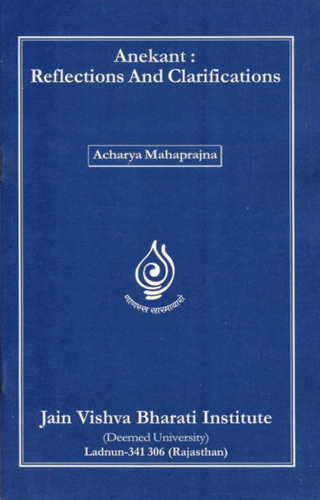Anekānta does not reject concepts like impossibility or improbability. For example, it is accepted by Anekānta that it is neither possible nor probable that the Jiva (soul) may possess the particular modes of atom (which is not jīva). Similarly, it is neither possible nor probable that the non-sentient substances (ajīva) may posses the modes of jīva (the sentient substance). It is not expected of the doctrine of Anekānta to turn impossible into possible or improbable into probable. Anekānta's job is to get rid of the internal contradictions apparent between the eternal and the non-eternal, that is, substance and mode. Seen from the point of view of fluxism, change is real and true, while the eternal is unreal; whereas according to the eternalism (the doctrine of absolute permanence), permanence is real and true, while change (or impermanence) is unreal. This illusion of contrast and conflict between eternal and non-eternal is creating problems in understanding the reality (sat) or substance (dravya). Anekānta has tried to resolve this problem by asserting that both—the eternal as well as non-eternal can co-exist in the same substratum. (In other words, they do not need separate substratum to exist in). The substratum of both is the sat (reality). Therefore, we cannot comprehend sat by separating the permanence and creation—cessation (or impermanence). Can we separate a pot from the clay? Can we imagine a cloth different from the fibres? In the same way, can we find out a substratum of mode other than the substance itself? This is not possible at all. It is only by accepting this impossibility that anekānta has put forth a solution to the problem.
There is a continuous flow of modes in every real (ultimate) substance. As permanence is the characteristic (nature) of ultimate substance or reality, so is the creation and cessation.
The simultaneous occurance of substance and mode is not at all a philosophical problem. The reality is having permanence at the same moment when it is possessed of creation and cessation. Therefore, the state of their simultaneity is bound by the law of concomitance (sāhacarya). We misunderstand all laws to be universally applicable - this idea, in fact, creates problems. It is true that two artificial (or undertaken) activities cannot be simultaneous (in the strict sense). This is the law of 'undertaken actions'. Nevertheless, natural activities can take place in any number, simultaneously, for the law of 'undertaken action' does not apply on them. For example, the destruction and creation take place in the cells of the body, continuously. There is simultaneous creation and destruction. Another example is that of a duet or a di-atomic molecule. It can be a vibrating molecule and non-vibrating molecule at the same time. One of its atom may be vibrating, while the other one may be non-vibrating. Both these properties (that of vibrating and non-vibrating) exist simultaneously in it. Thus simultaneity means the tri-temporality of change.
In Jain philosophy, both the types of modes viz. actual and potential are accepted. Thus, in clay, the mode of pot is potential while that of clay is acutal.
Let us take another example: A person is trying to recite ten verses. After having recited a verse, we can say that he has actually recited one verse, there is the probability that he would recite the remaining nine verses. As soon as he starts reciting the second verse, the words of the first verse have gone into the space-record, he is actually reciting the second verse and there is the probability that he would recite the next verse, and so on.... Now, generally we consider only the present mode as the real one; but it is not an all-pervading rule. The universal law is that the recitation of the first verse which has passed away in the space-record is now not real in the form (or mode) of recitation, but the sound waves (or particles) in which the verse was recited are still actually existing in space, and therefore the verse is still real in the form of sound-particles (or waves). Thus we cannot imagine absolute difference between the actual and the potential mode. Thus only the conception of different-cum-identical can take us towards the reality. The Jain philosophy has explained the doctrine of simultaneity on the basis of the tri-temporal nature of substance and its transformable modes or states. Therefore, the explanation of presence and absence cannot be made merely on the basis of the sole rule of present tense.
 Acharya Mahaprajna
Acharya Mahaprajna
 Publisher:
Publisher: 